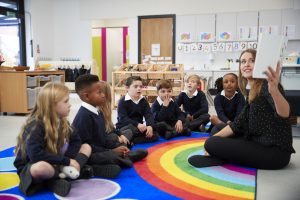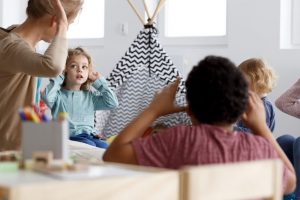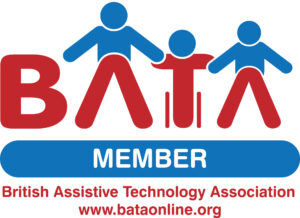Developing children’s language and communication skills – the basis for all learning
Children develop at different rates, so, when they are very young, it can be difficult to determine whether they have a speech, language and communication need (SLCN) or whether it is simply that they are not developing as quickly. It is a term that covers a range of challenges and difficulties, from making sense of what is being said, to retaining directions and instructions, or finding the words necessary to make a point or to construct a sentence. Other pupils may know what they want to say, but have difficulties physically forming the sounds. It could also be due to other challenges such as a hearing impairment, so it is important to get this checked whenever SLCN is a concern.
Other factors may also come into play, such as the environment in which they are growing up, perhaps with a disrupted family life, or with parents or carers who don’t have much opportunity to talk or read to them.
As children get older any delay in language development may become more evident. However, this can again be complicated, for instance if they themselves, or their family, have English as an additional language (EAL). In this instance it needs to be ascertained whether there is a similar concern about their acquisition of the home language, too.

In the classroom SLCN can be manifested in several ways. For a start there may be issues in establishing routines, or following instructions, with learners challenged by retaining and following a number of steps. They might also have problems with paying attention, or focusing on what is being said, or the task at hand. Again there could be other possible reasons for this, such as attention deficit hyperactivity disorder (ADHD), or autistic spectrum conditions (ASC). Here further investigation will be necessary by referral to specialist agencies.
As can be seen, SLCN is a complex area, needing a range of strategies to address them. However, there are some approaches which can help all learners, regardless of their developmental stage.
One is to create a language friendly classroom, wherein distractions are minimised and language emphasised. This can mean making sure learners are focused on the speaker when being addressed (although some children find it difficult to both look and listen at the same time), and that the whiteboard, or other stimulus, is off or put to one side when instructions are being given.
It also means modelling the behaviours pupils are expected to display, so staff need to listen attentively, whenever appropriate, getting down to the children’s level and holding eye-contact. It also helps to reflect back what they say, and reframe it when necessary. Visual prompts are also useful, which can include signs or gestures to reinforce what is said, photos or illustrations to demonstrate actions, or to help identify feelings, and role play to demonstrate what is required.
The language used may need to be modified, with direct, simple sentences, and explicit learning of new vocabulary. Also, there will also be times when the pace of learning needs to change, to give learners time to process the language involved in a lesson. Staff should check often that learners have understood what has been said, and encourage them to ask, or to indicate, when it is not clear.

Above all, it needs to be an environment within which learners feel confident that they can communicate and try out their developing skills.
The Communication Cookbook suggests that there five areas to focus on.
-
Attention and listening – remove distractions and make sure you have their attention.
-
Vocabulary – not only learning new words, but also making connections between them, whether by sound, meaning or categorisation.
-
Building sentences – starting with a couple of words and working up from there.
-
Telling stories – in the broadest sense. We use narratives all the time, whether in describing what we are doing or where have been, to making a report or creating fictional tales.
-
Conversations – this is communication with a purpose, where participants take turns, and bring the other skills together. Here it is often more effective to comment on what a learner is doing than to ask a direct question.
As with any area of learning, language and communication benefits from repetition, with new learning and progress made explicit, and pupils encouraged to recognise, and celebrate, their own achievements. Understanding and communication are the building blocks upon which education is based, and their importance can not be underestimated.
By John Galloway
John specialises in the use of technology to improve educational opportunities for children and young people with special educational needs. Much of the week he works in Tower Hamlets, in London’s east end. He also freelances as a writer, consultant and trainer. @johngalloway







